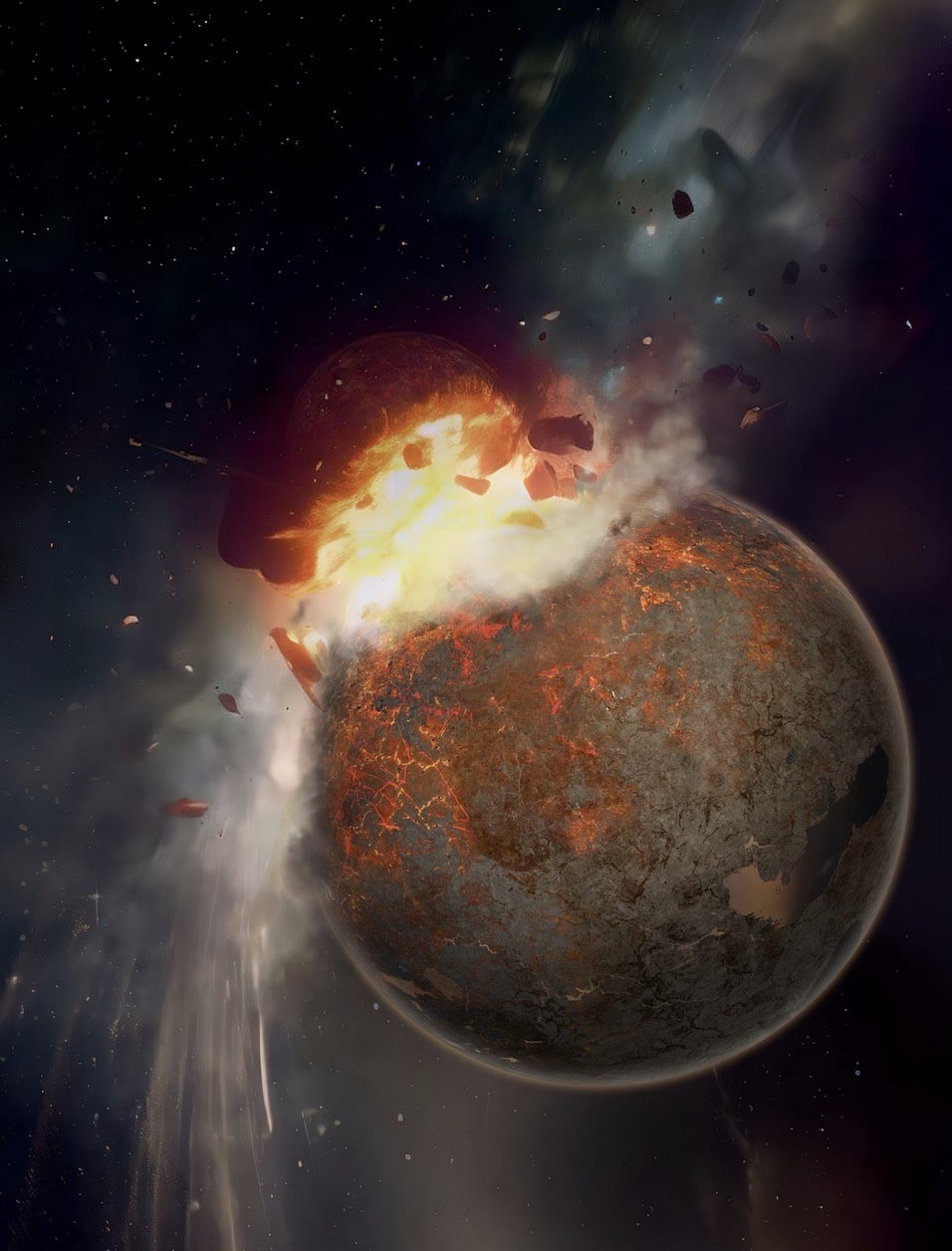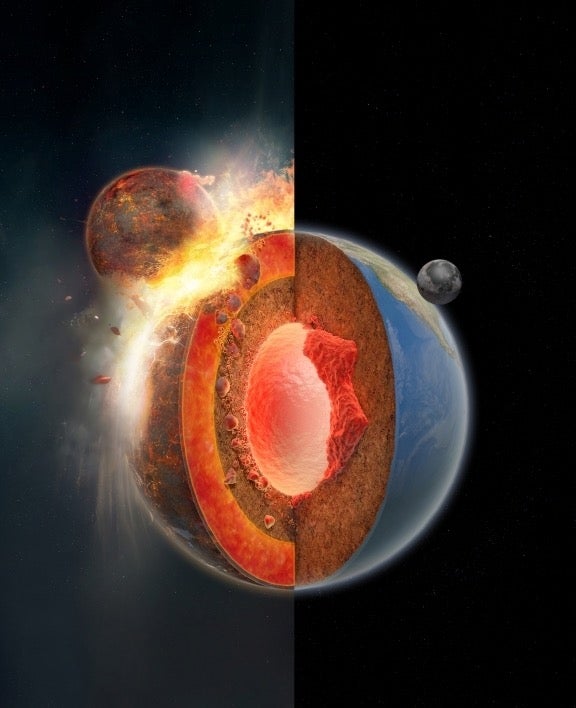
Long ago, our solar system lost a planet.
The planet, which scientists have since named Theia, found itself barreling uncontrollably toward a young Earth. The resulting impact destroyed Theia, turned Earth molten, and ultimately spun off some of the materials mixed between the two bodies into the Moon, which, by some estimates, formed in as little as 40 years. (No, that’s not a typo.)
We don’t have much evidence that we can tie directly to Theia — only a series of simulations that seem to require such a catastrophe to explain the Moon’s present materials, orbit, and inclination. But a study published recently in Nature suggests that some of Theia is hiding deep within Earth in the form of unusual blob structures in our planet’s lower mantle. Called the large low-velocity provinces, scientists have sought their origins since they were discovered in the 1980s.
The blobs are huge — each is roughly twice the mass of the Moon. They also provide evidence that some pieces of Theia survived the ancient pileup somewhat intact, rather than becoming completely molten and mixing in with Earth. Evidence of them comes from strange signatures in seismic waves coming from deep within Earth.
The idea of Theia has its origins in the mid-1970s. Scientists looking into the genesis of the Moon suggested that the Moon was a part of Earth broken off in a collision. The solar system likely had many more planets than we see today. Some were destroyed, some were cast out of the solar system. Some could be hanging out at the outskirts, too small and dim to detect via current methods.
At the time of the impact, the solar system was around 50 million years old. It’s 4.5 billion years old now.
Simulations show evidence of Theia
Qian Yuan, a postdoc at the Caltech Seismological Laboratory, says the team created a series of computer experiments to look at giant impact models. He and his colleagues believe that they came from Theia for a few reasons. The first is the simulations show blobs of similar materials entering Earth’s lower mantle as Theia plummeted in.
There’s also, Yuan says, the part of the simulation that indicates “that these Theia mantle rocks can withstand Earth’s 4.5 billion years of evolution, due to their higher density compared to Earth’s mantle.” This may indicate that only the upper layers of the mantle were molten while the lower mantle was able to survive, allowing the iron-rich materials to sink in.

Scientists call the scenario where Theia collided into Earth to form the Moon the Giant Impact Hypothesis. There are debates as to whether that collision was head-on or if Earth was sideswiped by Theia. Yuan says this supports the findings of a 2001 study suggesting Theia hit Earth at about a 45 degree angle. (That paper’s author, planetary scientist Robin Canup at the Southwest Research Institute in Boulder, Colorado, incidentally told Nature that while the “blobs” under the Earth were potentially part of the Theia pileup, “this paper is the first in my mind to really take that notion seriously.”)
Yuan says there could be some rocks coming from this region that made their way to the surface.
“Some ocean island basalts were suggested to have brought some traces from these two blobs, which show very, very ancient signatures,” he says.
Because Earth and the Moon are made of roughly the same stuff — a mix of materials from Theia and early Earth — there could also be evidence of similar materials in lunar rocks. That’s the next step for the team. Yuan says the team wants to “contact more lunar scientists to test our hypothesis, as the Moon should have similar rocks in its mantle.”









